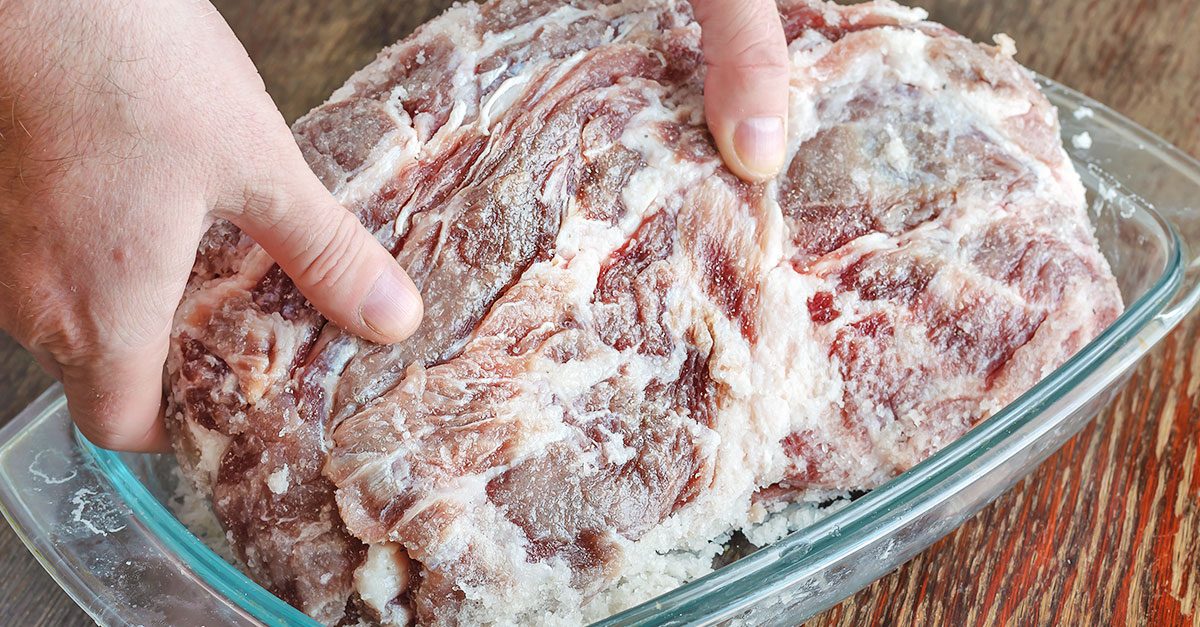10 Common Food Safety Mistakes
Many of us are making these common food safety mistakes every day, yet we are completely unaware we’re doing anything dangerous.
;)
Many of us are making these common food safety mistakes every day, yet we are completely unaware we’re doing anything dangerous. With today’s busy lifestyles, a lot of us also try to save time by cutting corners in food preparation, such as not heating leftovers up to a proper temperature, or not washing fruit and veg thoroughly.
Here’s 10 of the most common food safety mistakes:
1. Tasting food to see if it’s still ok to eat

Sometimes, it’s quick to taste food to see if it has gone bad or not, but you can’t always taste, smell or see bacteria that can cause food-borne illnesses. Tasting even a tiny amount of gone-bad food can make you seriously ill.
The solution: Throw away all expired foods before bacteria gets a chance to grow. If you have a home compost bin, add your expired plant-based foods and bread to it.
2. Using the same plate for raw and cooked food

Putting cooked meat, poultry or seafood back on the dish that held it when it was raw can cause cross-contamination. Bacteria from raw meat can easily spread to ready-to-eat foods and cause food poisoning.
The solution: Use separate plates, cutting boards and utensils for raw and cooked meats.
3. Thawing food on the counter top

Lots of us get something out of the freezer and put it to thaw on the countertop without realizing that harmful bacteria in food multiply rapidly when foods are kept in the danger zone of between 40F and 140F.
The solution: Always thaw food in the refrigerator, cold water or in a microwave.
4. Washing raw meat

Washing raw meat or poultry means the germs get splashed around your sink and countertops, making them spread over a far greater surface.
The solution: Never wash raw meat or poultry, only fruits and vegetables.
5. Leaving food out to cool before putting it in the fridge

food-borne bacteria can grow rapidly in it, even if it looks ok.
The solution: Refrigerate foods within the time limits, and if you are packing lunch or a picnic, put perishable foods in a cooler with ice or cold packs.
6. Eating raw cookie dough or other foods with uncooked eggs and flour

Raw eggs can contain Salmonella, or other harmful bacteria, and even raw dough made without eggs can contain E. coli, so it’s best to avoid the risk.
The solution: Cook eggs thoroughly, and don’t eat foods that contain raw or undercooked eggs.
7. Marinating meat or seafood on the countertop, and/or using raw meat marinade on cooked food

If you leave food out marinating in a dish on the counter top, you run the risk of harmful bacteria multiplying rapidly, and if you use the same marinade on raw and cooked meats the bacteria from the raw meat can spread to the cooked meat.
The solution: Always marinate raw meat, poultry and seafood in the refrigerator, and throw used marinade out after it’s touched raw meat. You could always make extra marinade and keep some separate for using only with the cooked meat.
8. Not cooking meat, poultry, seafood and eggs thoroughly

Cooked food has to be heated to a high enough internal temperature to kill bacteria before it’s safe to eat – undercooked foods, especially poultry, pork and seafood, can give you some nasty illnesses.
The solution: Use a food thermometer to tell you if the foods are safe to eat – you cannot rely on sight, smell or taste to tell if the food is cooked through.
9. Forgetting to wash your hands

Your hands can carry many illness-causing bacteria, and if you don’t wash them before touching or preparing food, you risk passing on infection – especially if you’ve touched raw meat and then touched other foods without washing your hands.
The solution: Always wash your hands for at least 20 seconds with soap and hot, running water to kill germs.
10. Using the same sponges and dishcloths time after time

The sponges and dishcloths you use to wash your dishes and clean your countertops are some of the dirtiest tools in the kitchen – they can hold harmful foodborne bacteria and can be a health risk.
The solution: sanitize your sponges and cloths every other day, and replace them every week or two for the best protection from germs. Wash dishcloths and tea towels on a very hot wash to kill all the germs.
;Resize,width=767;)

;Resize,width=712;)
;Resize,width=712;)
